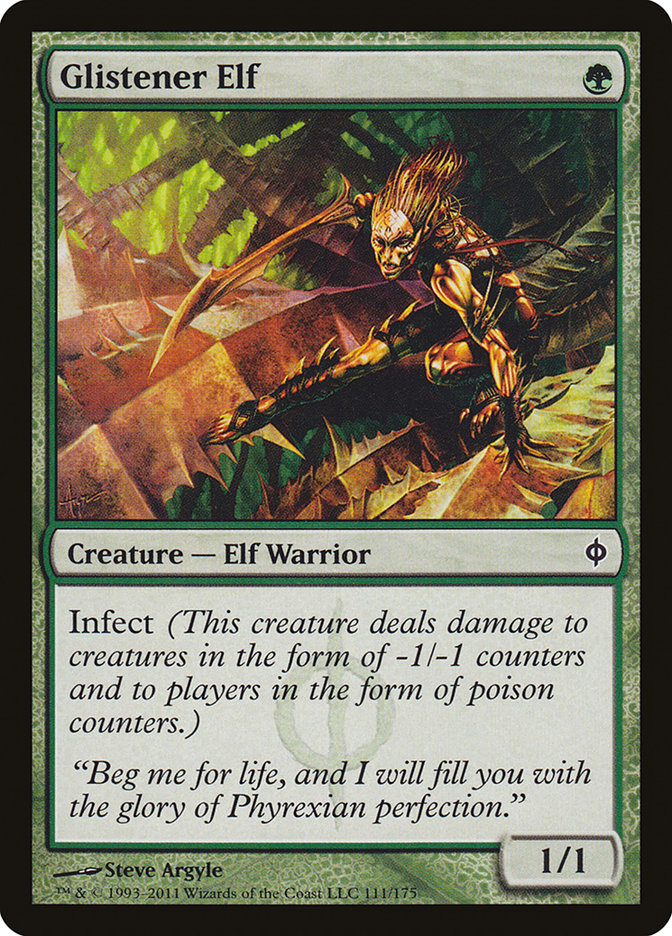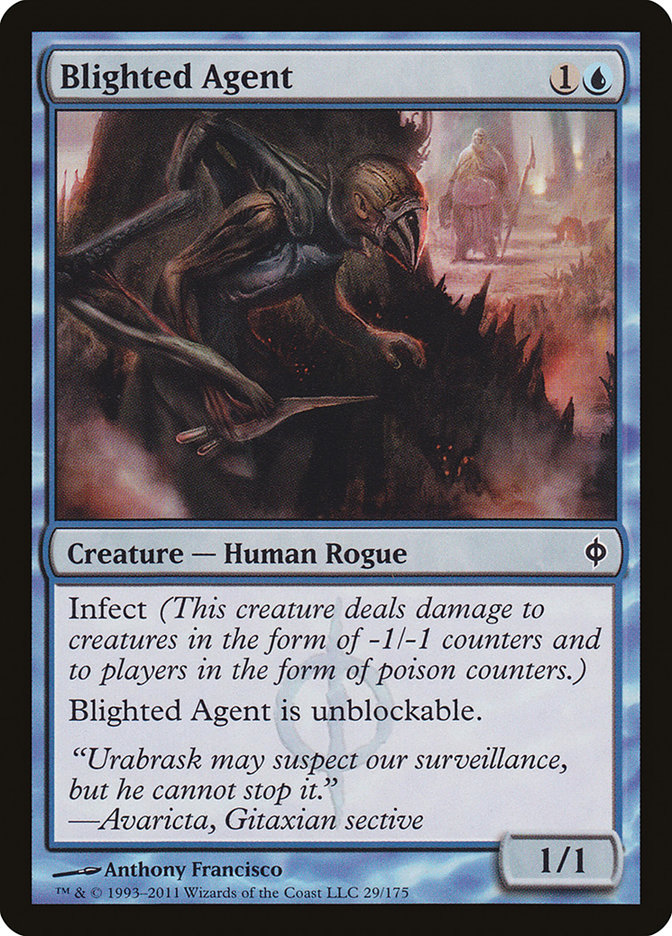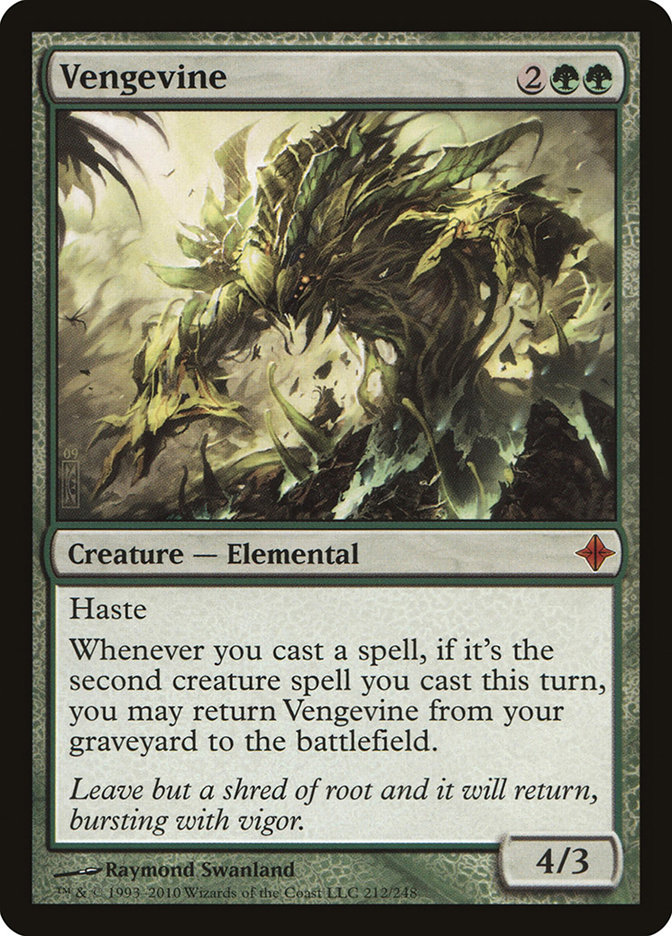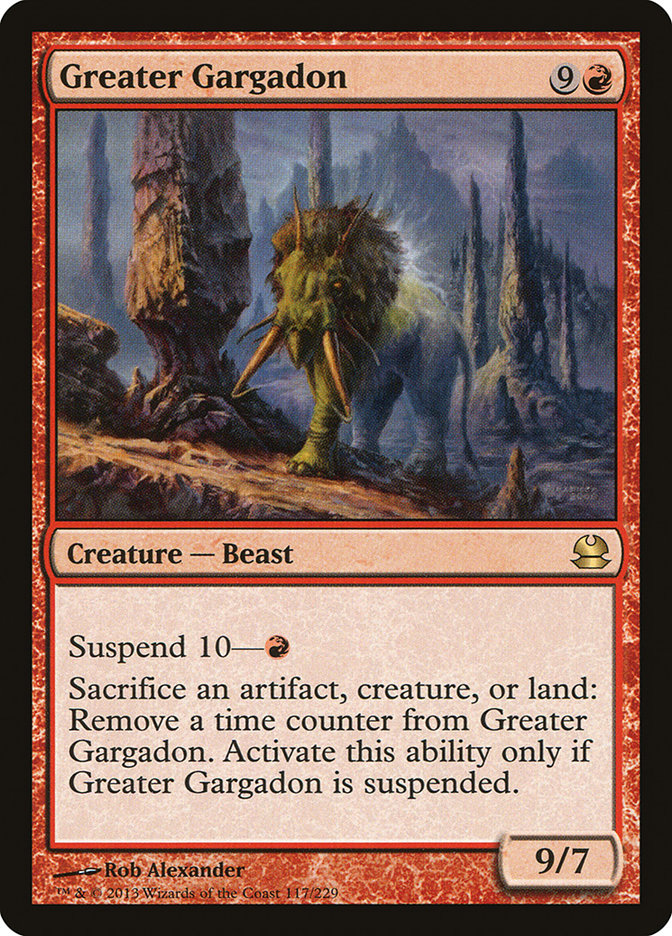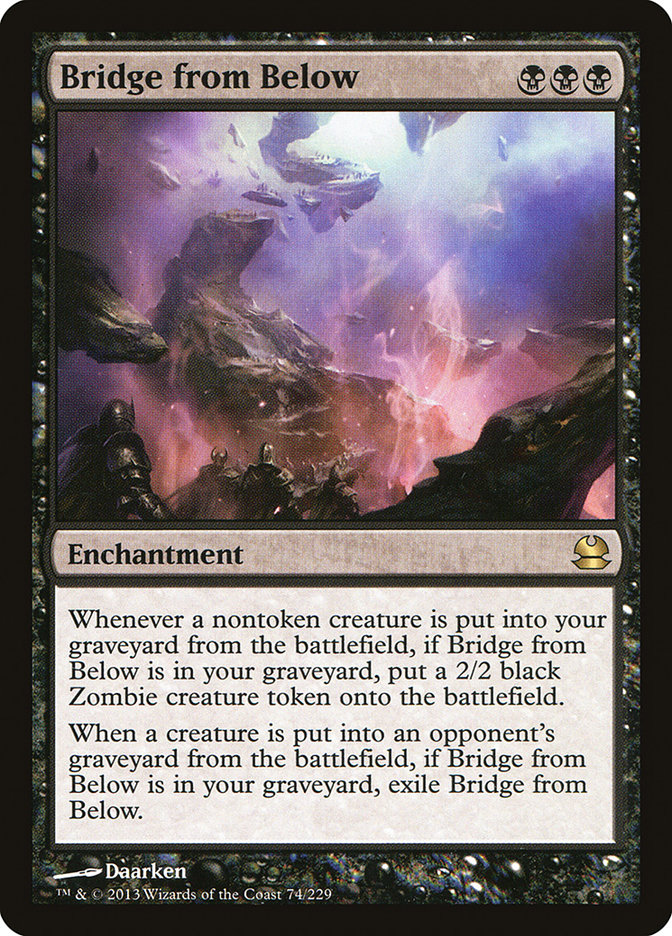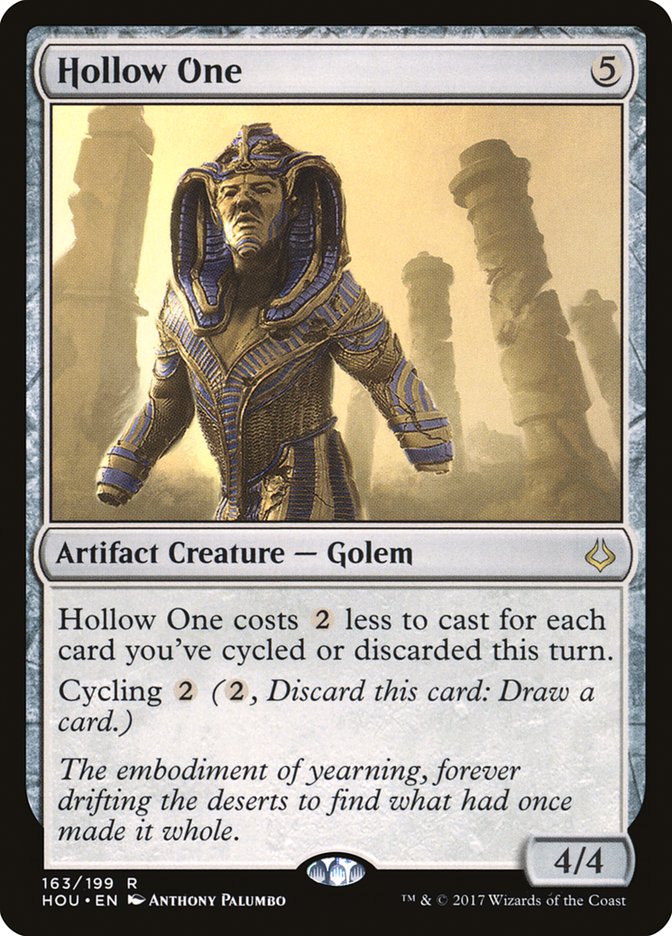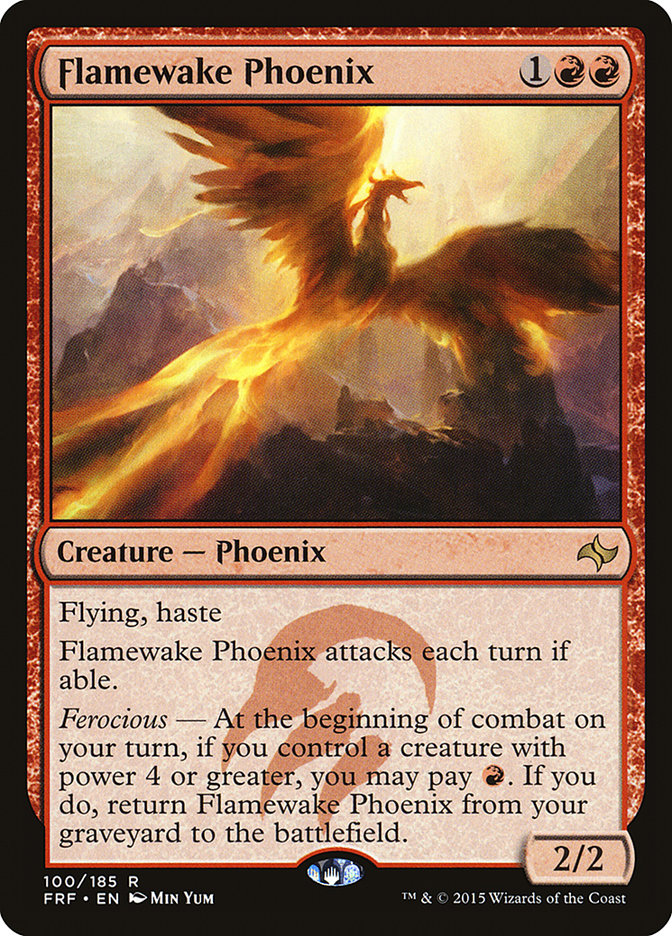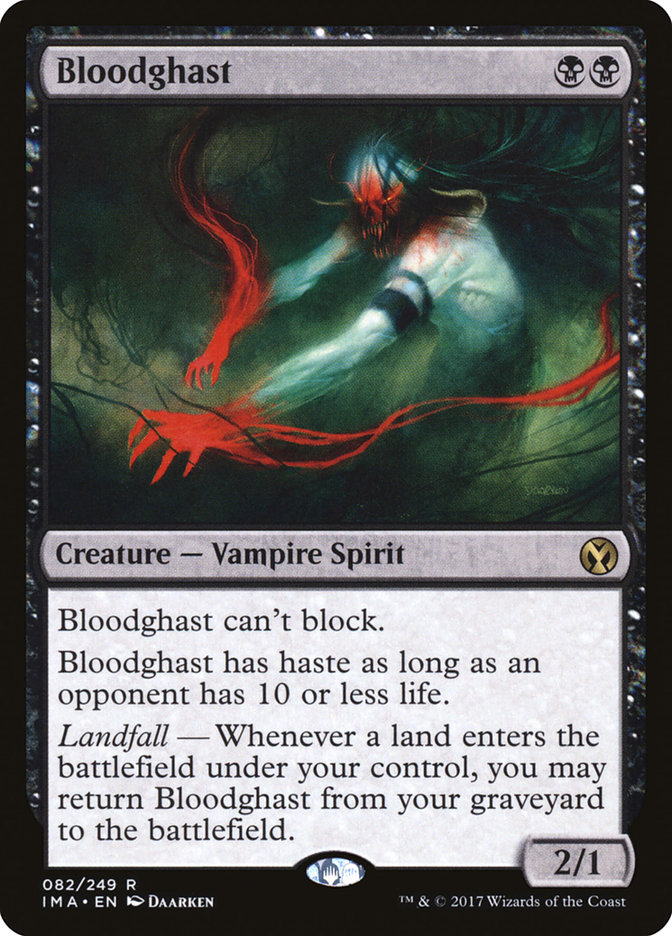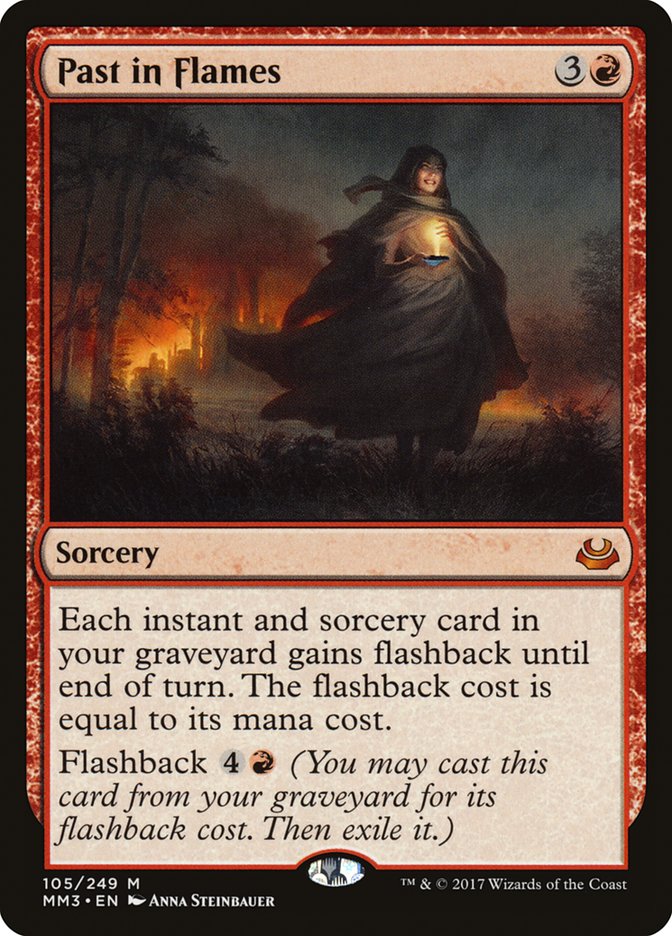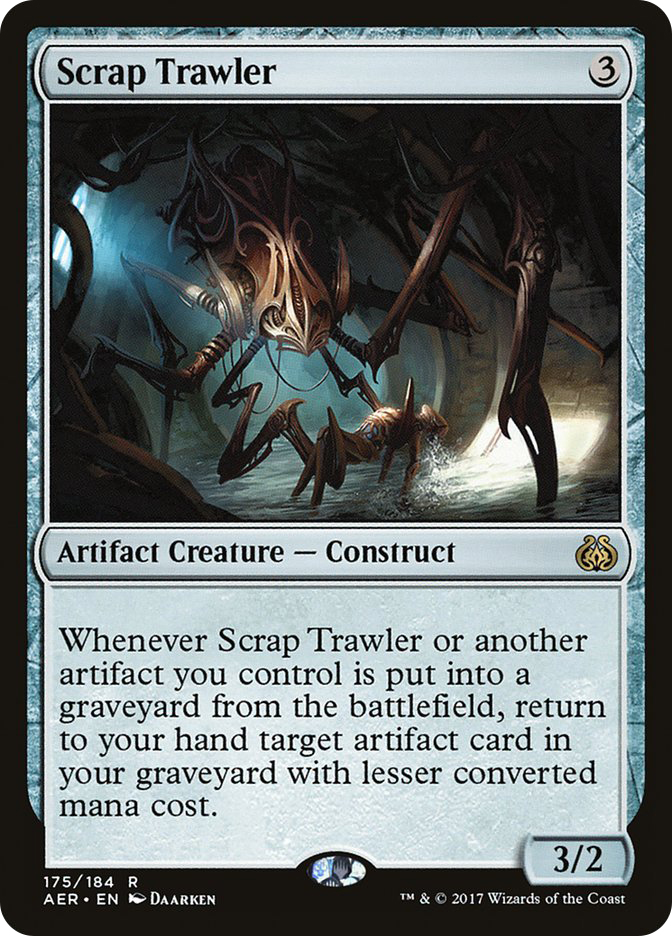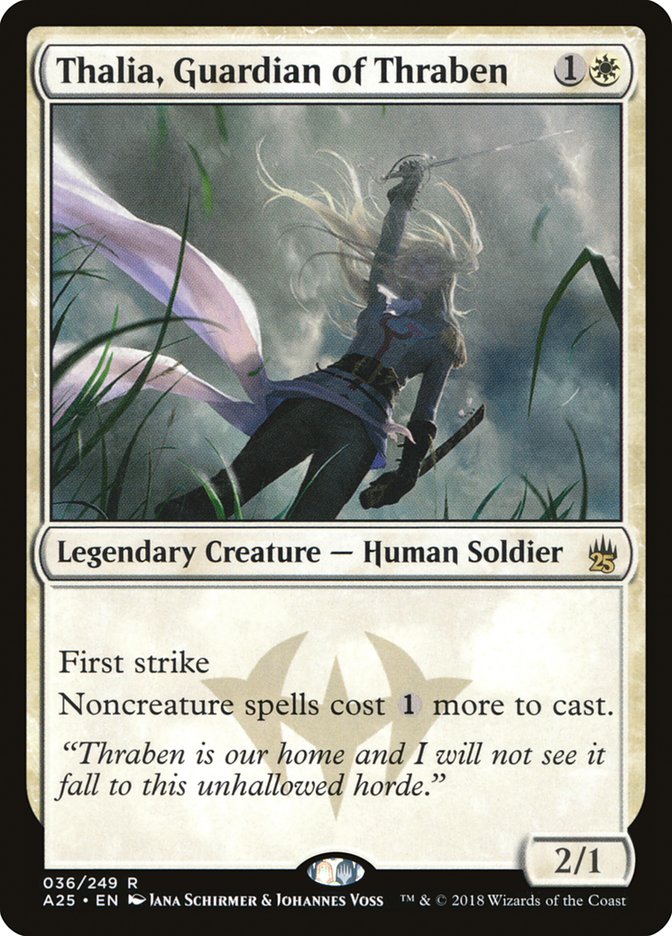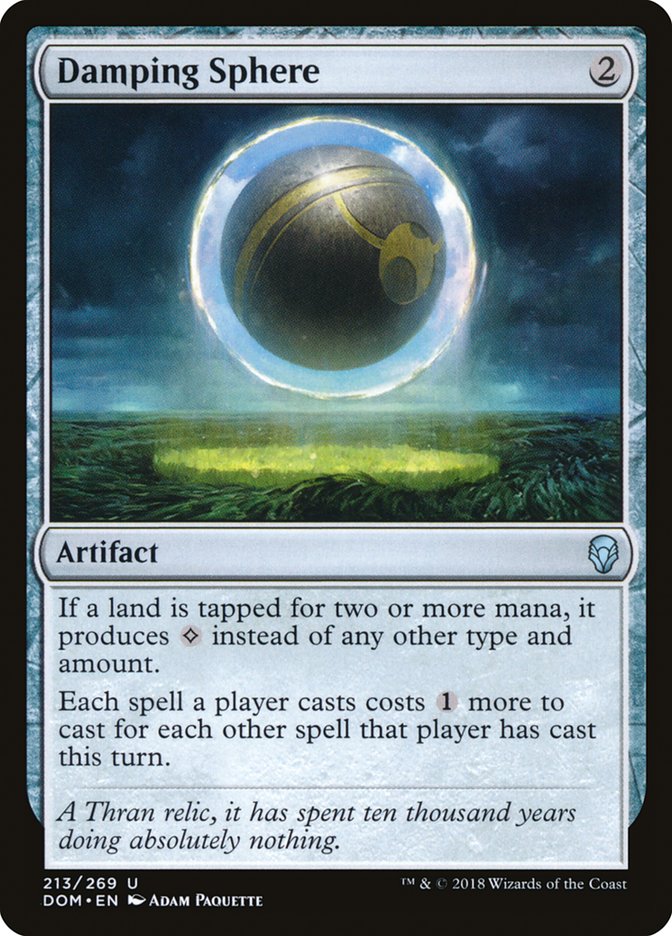Dredge, my favorite deck in Modern, is back, but you only get so large a
window before the metagame reacts and graveyard hate increases in every
sideboard, making your road tougher. Despite a great weekend in Dallas, I
felt comfortable playing the deck at the SCG Tour stop in Charlotte, taking
a solid 16th place despite a large amount of hate.
For Grand Prix Atlanta last weekend, a tournament that was sure to have a
similar density of hate and where the margin for error is slimmer by nature
of the size of Grand Prix, I couldn’t pull the trigger again. I opted for
the Infect list I suggested last week
, as played by Aaron Barich, finishing with another solid, but unsatisfying
11-4 record, though this one was only good for 75th place.
I chose Infect because it has a good Dredge matchup, is weak against the
high-interaction decks that Dredge is good against, like Jund and Azorius
Control, and is a powerful, linear deck that doesn’t care about its
graveyard, and would thus likely face a field that sacrificed some
percentage points in the matchup by stacking their sideboards against
Dredge.
To some extent, that played out as expected, with fewer control decks
around and an increased presence of decks like Amulet Titan and Selesnya
Hexproof, which I played twice in the tournament. However, looking at
the top 8 decklists
, we see plenty of decks that utilize their graveyard between Hollow One,
Bridgevine, and two copies of Ironworks. Caleb Scherer was also on the cusp
of breaking into the elimination rounds with his trusty Storm deck that
wants to cast Gifts Ungiven and Past in Flames. More graveyard decks,
including Dredge, can be seen littered throughout
the top 32.
Presumably, decks that want to utilize the graveyard should become weaker
when Dredge pops up, since they take significant splash damage from the
increased density of graveyard hate in the metagame, but that doesn’t seem
to be the case here. So what happened? That’s the question I’m going to
explore today.
The Inadequacy of Hate
If you read my article from
two weeks ago
, you might remember this phrase. Hate cards are always going to be a
fundamentally disadvantageous way of approaching a matchup. It’s a sign
that you’ve exhausted all other options, need to get lucky to draw a
specific sideboard card on the first few turns of the game, and hope that
card does enough to carry you through an otherwise difficult game.
And unlike in game 1, your opponents are going to be prepared for your hate
in the post-sideboard games. Some decks, like Dredge, are so focused on the
graveyard that they have to bring in direct answers in the form of Nature’s
Claim and Assassin’s Trophy. This puts them in the same problem against
hate as their opponent was in in finding it, but it’s an adequate plan
given that you’ll likely need to steal only one of the sideboarded games.
But the decks that can pivot in a way to ignore graveyard hate are
particularly scary. There are few things more demoralizing in Magic than
drawing your best sideboard cards and still losing a game, because then you
know that your mistake was in planning, not execution, and there’s nothing
you can fix for the rest of the tournament.
or resilient enough to beat hate cards don’t last very long.
It’s clearly best to utilize graveyard hate as one tool in a larger, more
diverse arsenal, but then there’s also the question of which piece of
graveyard hate is most appropriate. Leyline of the Void and Rest in Peace
are the most powerful, but Rest in Peace can be slow and Leyline is only
functional in your opening hand. Is Surgical Extraction enough to cripple
the opponent or merely slow them down? Grafdigger’s Cage is faster than
Rest in Peace, but against some graveyard decks it does absolutely nothing.
Graveyard decks in Modern are not a monolith and need to be approached
differently. So let’s look at the four I mentioned earlier and how to
attack them.
BridgeVine
Creatures (32)
- 1 Greater Gargadon
- 4 Bloodghast
- 3 Goblin Bushwhacker
- 4 Vengevine
- 4 Viscera Seer
- 4 Gravecrawler
- 4 Insolent Neonate
- 4 Walking Ballista
- 4 Stitcher's Supplier
Lands (17)
Spells (11)

Along with Dredge, this is the most graveyard-centric of the graveyard
decks in Modern. As a result it’s also the most explosive. BridgeVine shook
up Modern for a solid month or two because at its best it looks completely
unstoppable, on the level of Legacy Dredge by making several Vengevines and
maybe some Zombie tokens on turns 1 and 2 while working toward an
impossibly fast Greater Gargadon or using Viscera Seer to dig for a lethal
Goblin Bushwhacker.
But with that high ceiling on its draws comes a very low floor. It doesn’t
take much to make a promising draw turn to nothing, and the fail rate for
the deck is very high. That means graveyard hate is at its best, but only
if it comes quickly. Surgical Extraction taking out either Vengevine or
Bridge from Below is great, as is an early Ravenous Trap, Tormod’s Crypt,
or Leyline of the Void.
But Rest in Peace can easily be too slow and Grafdigger’s Cage misses on
Bridge from Below, which is a problem. You need to stop this deck from turn
1 if your plan is to rely on hate cards, and sometimes you’re on the draw.
From their side, the green splash enables Assassin’s Trophy as an answer to
the enchantments as well as hardcasting Vengevines, which should not be
underestimated. The back-up plan is to flood the battlefield with small
creatures and act as an underpowered Goblins deck with Goblin Bushwhacker.
That plan can kill you quickly if you don’t respect it, but isn’t at all
robust as long as you play defensively and have a way to handle the
inevitable Greater Gargadon.
A lot of players underestimate the ability for BridgeVine (and Dredge) to
play through hate and start getting overconfident due to their Leyline of
the Void. The mediocre beatdown plan isn’t ideal, but it gets a lot better
when you don’t respect it. You’ll want to turn the corner quickly so as to
minimize the time they have to find an answer, but you still need to play
smart.
As for attacking this deck outside of graveyard hate, you’re mostly hoping
they don’t have an explosive draw and trying to kill them before they
assemble their synergies. Where Tron is generally fast enough to disrupt
Dredge it’s not fast enough here, so playing them straight up means going
to Storm or Infect.
Hollow One
Creatures (24)
- 4 Street Wraith
- 4 Bloodghast
- 2 Gurmag Angler
- 4 Flamewake Phoenix
- 2 Tasigur, the Golden Fang
- 4 Flameblade Adept
- 4 Hollow One
Lands (15)
Spells (21)

Hollow One was the deck that supplanted Dredge and is now similar to it in
terms of explosiveness. The ceiling here is higher with the multiple Hollow
One draws being better than anything Dredge can produce, but they are quite
rare and like Bridgevine, there are draws with this deck where the random
discards don’t go in your favor and you struggle to produce more than a
creature or two.
But unlike Dredge, Hollow One can operate entirely without its graveyard.
Flameblade Adept, Hollow One, and your red cards can win plenty of games
without the support of Flamewake Phoenix and Bloodghast, and they often
side down on those cards or the delve creatures to dodge graveyard hate.
What graveyard hate does against Hollow One is stop its recursive threats,
which are most effective when the game goes long. If you’re planning to
beat them early, then I don’t see graveyard hate as being effective in the
matchup.
There’s also another way to handle these recursive threats: clog the
battlefield. Humans is particularly good at this, with Mantis Rider often
completely bricking Flamewake Phoenix. Reflector Mage is great at handling
Bloodghast while stabilizing the battlefield against the larger creatures,
which is much of why Humans enjoys an advantage in the matchup despite some
weak cards.
Without being able to clog the battlefield, the recursive creatures stress
exile-based removal like Path to Exile, which typically need to be used on
Hollow One and the delve creatures. So by all means utilize your graveyard
hate to stop those creatures, but don’t think it’s shutting this deck down.
Rest in Peace is generally good here unless they’re on their most explosive
draws, but Surgical Extraction does the best job, because it doesn’t
interfere with your development so you keep pace with the rest of the deck.
You shouldn’t be overloading on hate though, and you shouldn’t be as
worried about the recursive creatures if you can win on the battlefield
instead; they are likely coming out in some numbers anyway.
Ironworks/Storm
Creatures (5)
Lands (15)
Spells (40)
- 2 Forest
- 1 Island
- 4 Krark-Clan Ironworks
- 1 Pyrite Spellbomb
- 3 Chromatic Sphere
- 4 Mind Stone
- 3 Engineered Explosives
- 4 Terrarion
- 1 Mishra's Bauble
- 4 Chromatic Star
- 4 Ancient Stirrings
- 4 Mox Opal
- 1 Spine of Ish Sah
- 4 Ichor Wellspring
Sideboard

Creatures (7)
Lands (14)
Spells (39)
- 1 Mountain
- 2 Island
- 4 Sleight of Hand
- 4 Serum Visions
- 4 Gifts Ungiven
- 4 Desperate Ritual
- 4 Opt
- 2 Remand
- 1 Empty the Warrens
- 2 Grapeshot
- 4 Manamorphose
- 4 Pyretic Ritual
- 2 Past in Flames
- 1 Unsubstantiate
Sideboard

I’m grouping these two decks together because to me they’re quite similar.
They are spell-based combo decks that utilize the graveyard to gain card
advantage, kill on turn 3 or 4 against the goldfish, have a creature that
is a key cog, and can hold their own in a long game because they see a lot
of cards.
The best draws from both decks involve utilizing the graveyard, either
through Past in Flames or Scrap Trawler, so trying to stop those
interactions makes sense, but these decks both easily pivot away from using
their graveyard.
After sideboarding, Storm will have trimmed way down on Gifts Ungiven,
instead going for Pieces of the Puzzle to set up the combo, and Empty the
Warrens as a finisher that doesn’t need the super high storm count enabled
by Past in Flames like Grapeshot, though a Remand can also enable the
direct kill.
Most decks will bring in an answer or two to Empty the Warrens, but they
won’t have many, and careful management of their resources from the Storm
player means an answer to it is unlikely to knock them out completely.
Trying to contain the battlefield to stop the tokens loses to a larger
storm count or follow-up burn from Grapeshot and Lightning Bolt for reach.
Storm effectively pivots to small-balling you, utilizing its low land count
and card advantage from Pieces of the Puzzle to go long, killing you over
multiple combo attempts.
Ironworks can operate similarly, due to the introduction of the card Sai,
Master Thopterist. It’s effectively Empty the Warrens over multiple turns
with how quickly the deck can draw cards and cast cheap artifacts, and the
flying tokens are harder to contain. Moreover, most of the answers to the
tokens, like Anger of the Gods, Maelstrom Pulse, and Engineered Explosives,
miss Sai itself, so they can simply rebuild and keep going.
The key against both of these decks is to stop the card drawing. It’s used
to set up the graveyard-centered plans as well as the alternate win
conditions, and find additional copies of the necessary pieces to re-combo
if their first attempt is stymied. Taxing effects like Thalia, Guardian of
Thraben and Damping Sphere are great, as are generic disruption like
counterspells and discard spells to stop the more powerful cogs.
You can supplement this disruption with graveyard hate, but it’s important
not to go overboard because you need to pressure them. Against Ironworks,
specifically, Rest in Peace and Leyline of the Void prevent card drawing
from Chromatic Star, Terrarion, and Ichor Wellspring, but they don’t stop
Serum Visions and Opt, and often do more harm than good by mucking up your
draws and giving them time. Effects like Surgical Extraction or Relic of
Progenitus need to be part of a very specific plan to be effective, because
on their own they are too easy to play around.
One of the reasons Humans is so good against linear decks is because its
disruption pieces attack, taking away precious draw steps from the
opponent. Outside of Humans, Vendilion Clique has long been a choice card
to combat combo, and that hasn’t changed. Recently, Spell Queller has
joined the mix and is a big part of why Bant Spirits holds its own in those
matchups as well. Look for disruption that’s either cheap enough to be left
up after a creature or attacks itself and you’ll be in much better shape
than simply trying to take out the opponent in one punch.
Magic than drawing your best sideboard cards and still losing a game,
because then you know that your mistake was in planning, not execution, and
there’s nothing you can fix for the rest of the tournament.
One of the primary complaints you hear about Modern is that the format has
too many different linear decks and none of the fair decks can properly
prepare for all of them. Despite being a tired evaluation of the format, I
think it misses the mark on what makes these linear decks good. It’s not
that the format is unprepared for them, though that helps, it’s that they
can effectively play through or play around the cards that are supposed to
beat them. Linear decks in Modern that aren’t consistent or resilient
enough to beat hate cards don’t last very long.
I see BridgeVine falling into that category, and am thus, I’m not putting
much stock into its performance last weekend. But Hollow One, Storm, and
Ironworks are all proven decks and will continue to be good even in the
face of prepared opponents.
The real takeaway from last weekend is the lack of control. There were zero
copies of Jeskai Control and Azorius Control in the top 32 of the Grand
Prix, and that’s because they’re unable to consistently pressure their
linear opponents while having an overload of creature removal that leaves
them with dead cards in game 1. These are the decks that rely on knockout
punches from graveyard hate to beat linear graveyard decks and are thus,
the decks that are most disadvantaged when a deck like Dredge warps the
metagame.
If you’re looking for a deck for this weekend and don’t want to play a
tribal deck, I’d look hard at Ironworks if you’re more concerned about
beating the creature decks, and Storm if you want to beat the other linear
decks. Both are powerful enough to win regardless of the matchup, but
require tight technical play in order to do so. It’s no surprise that
practiced players keep doing well with these archetypes, while others fall
victim to the hate and blame the deck.
The graveyard is one of the most powerful resources in the game. Magic’s
history is littered with successful decks that have utilized it to varying
degrees. Don’t give in to the fear.


